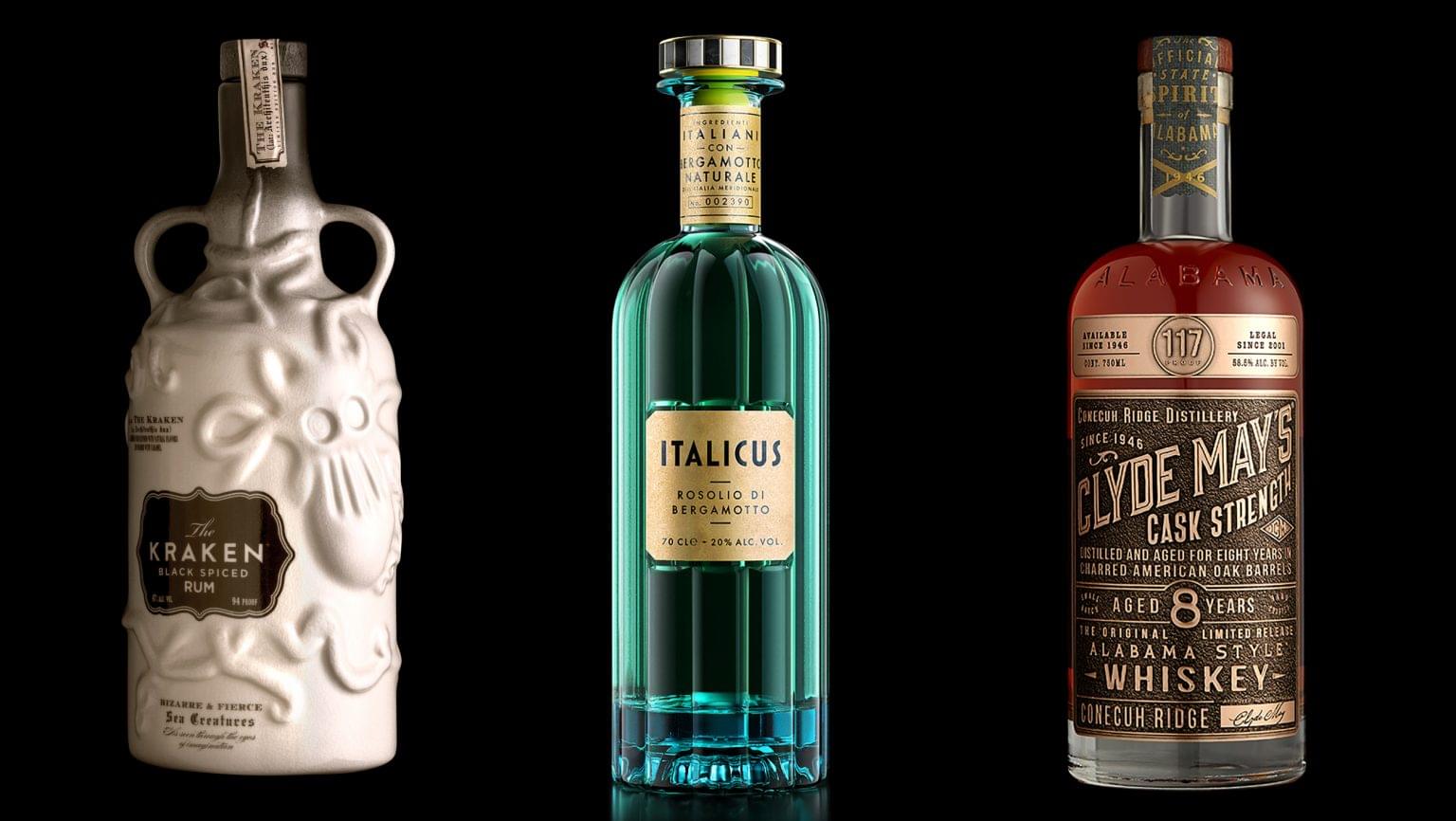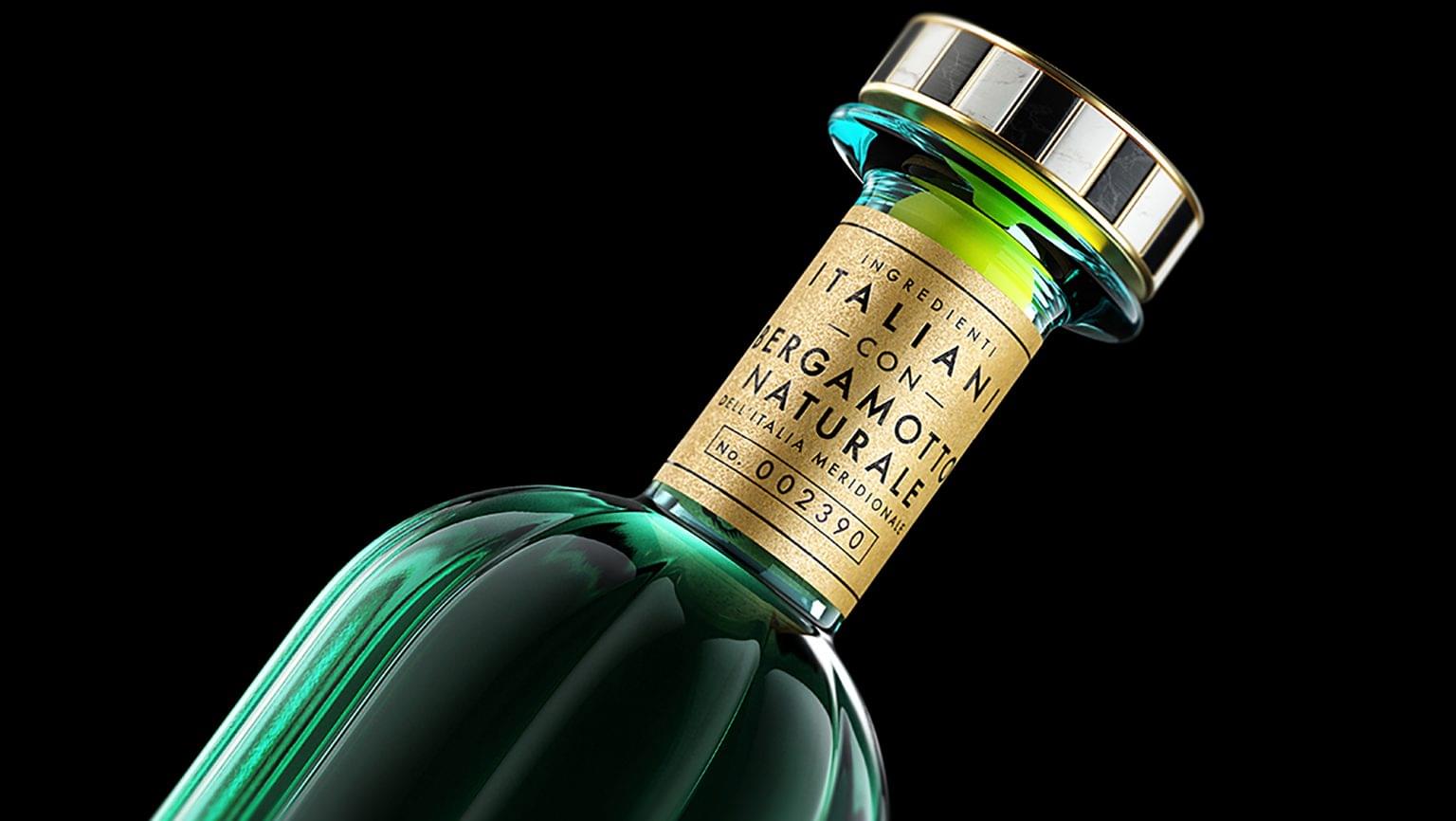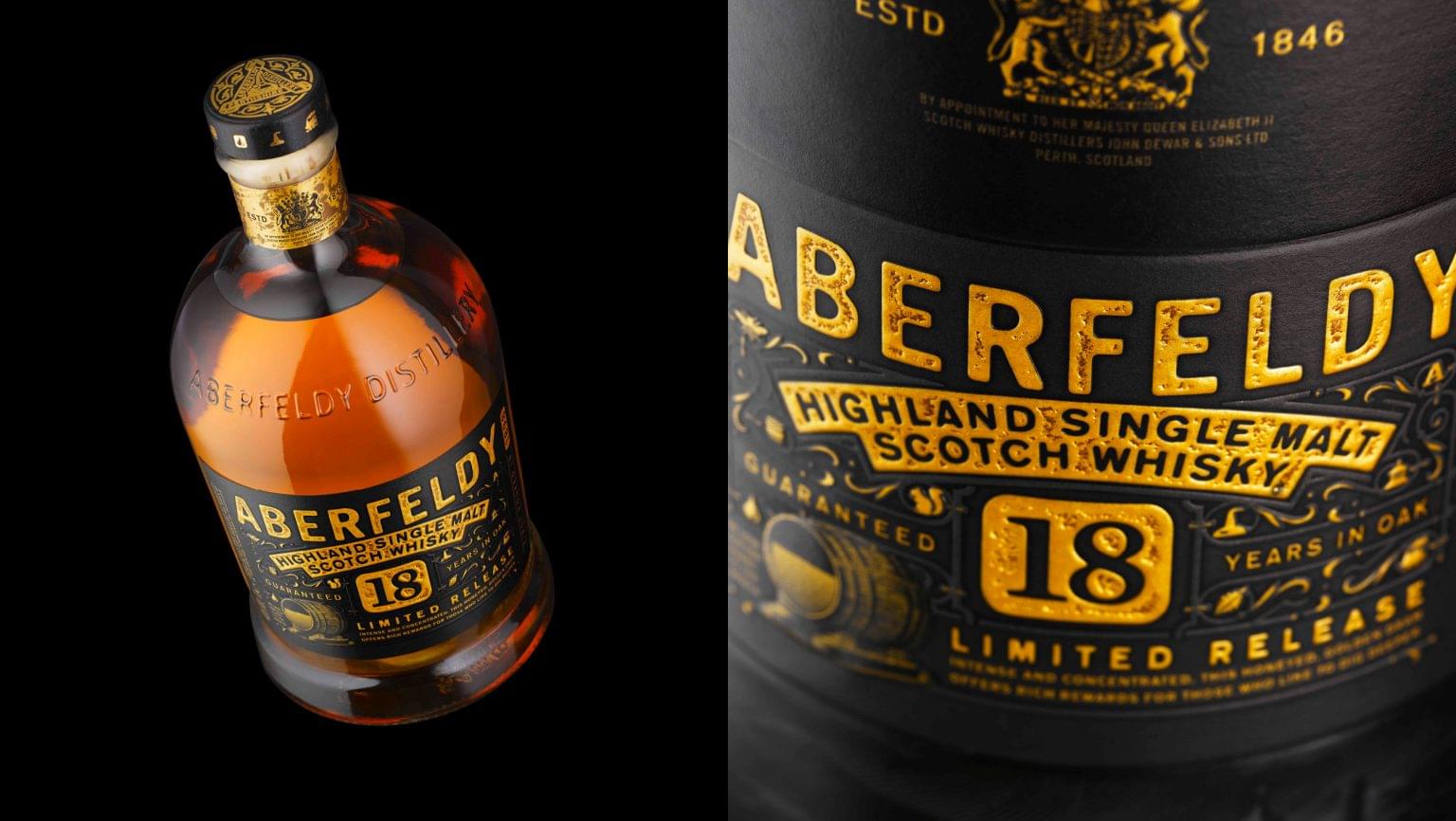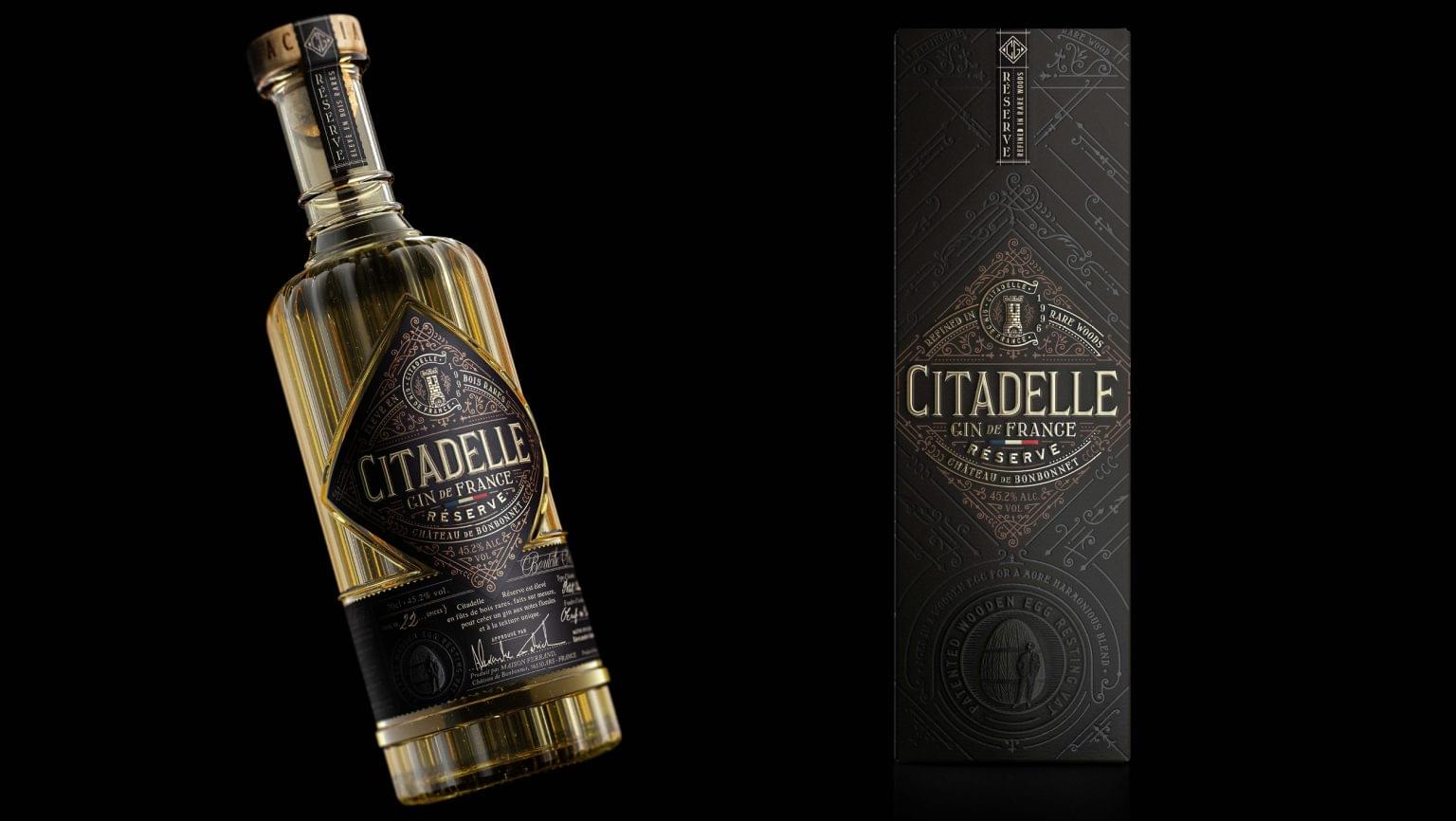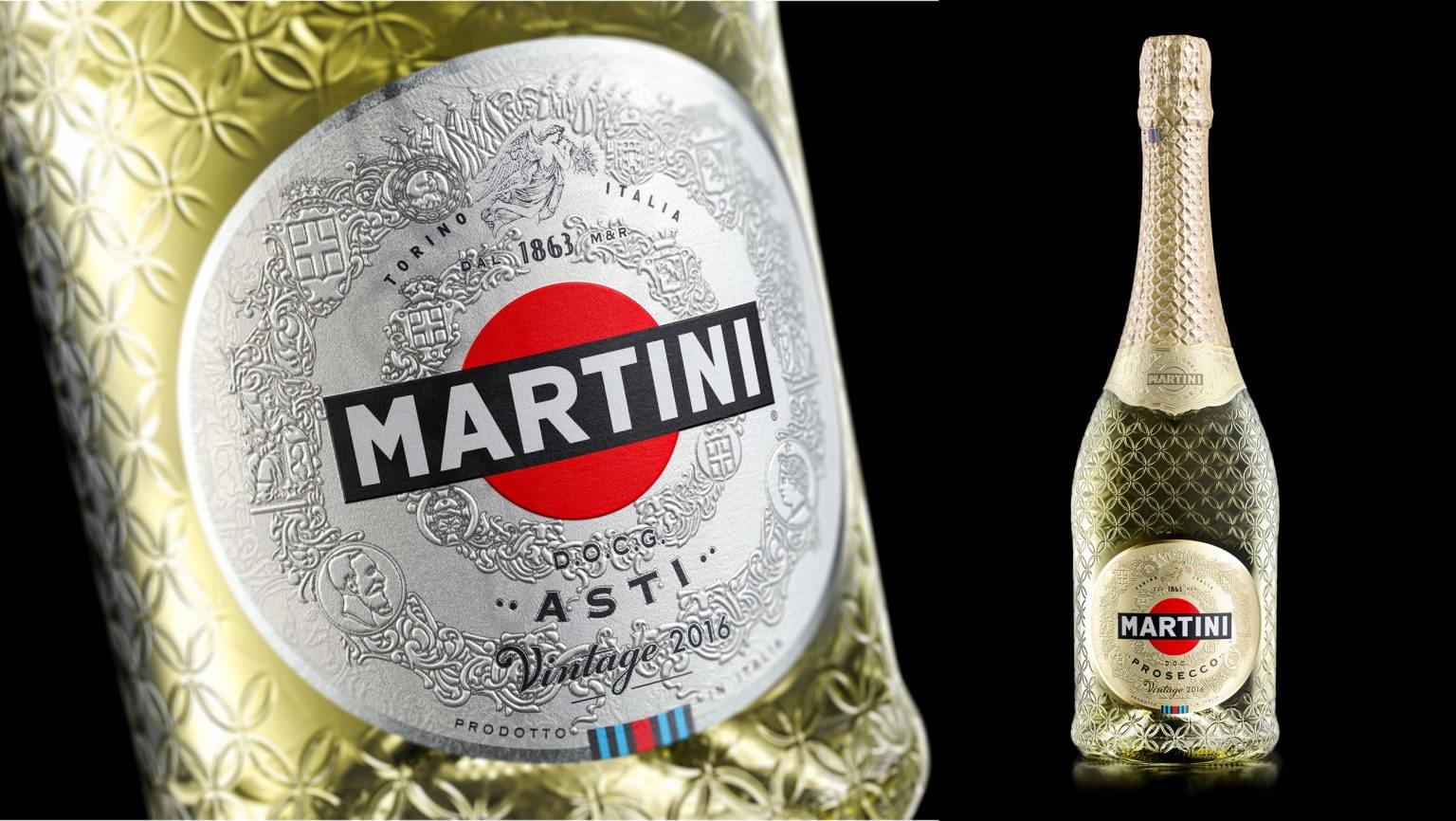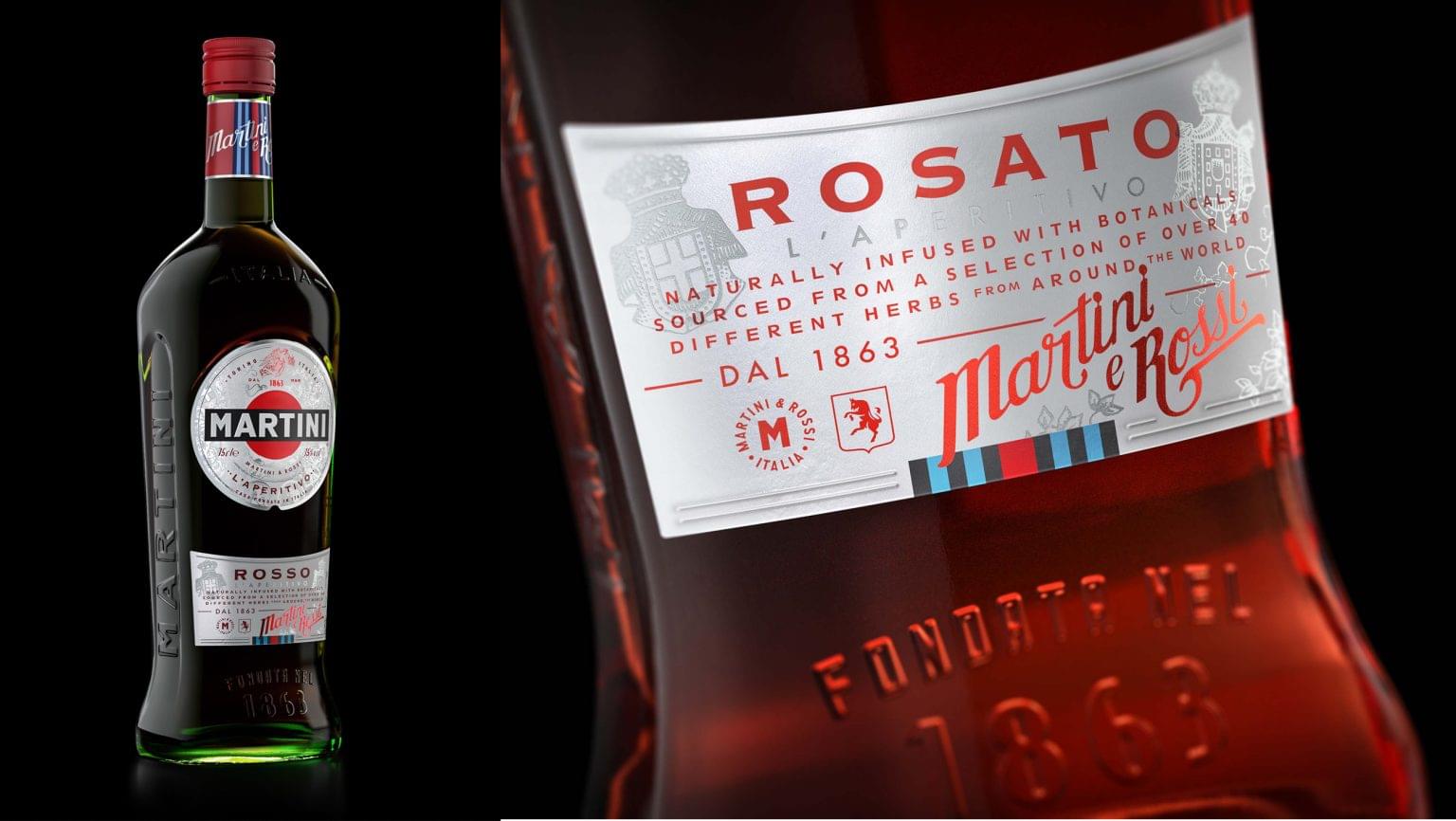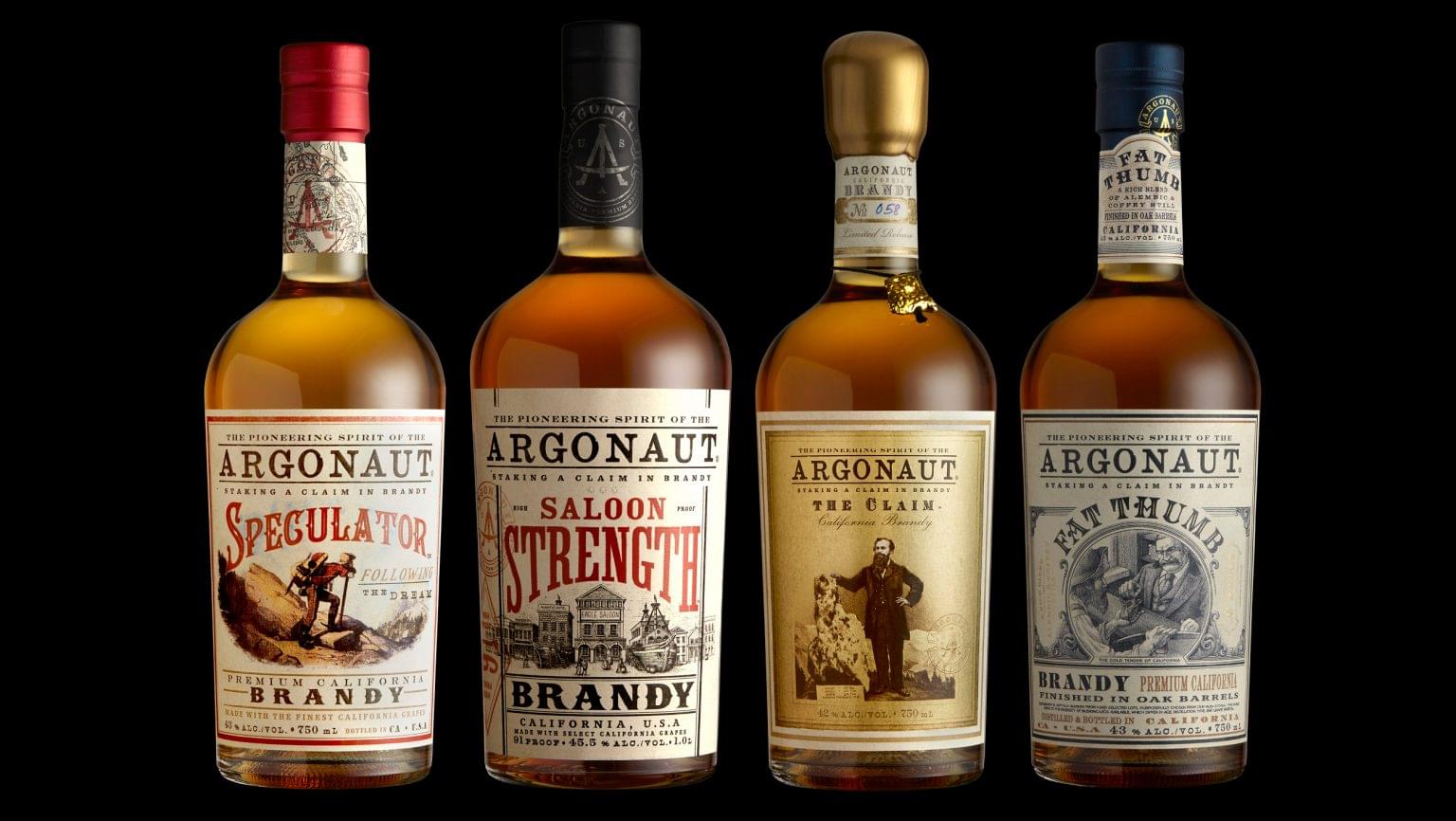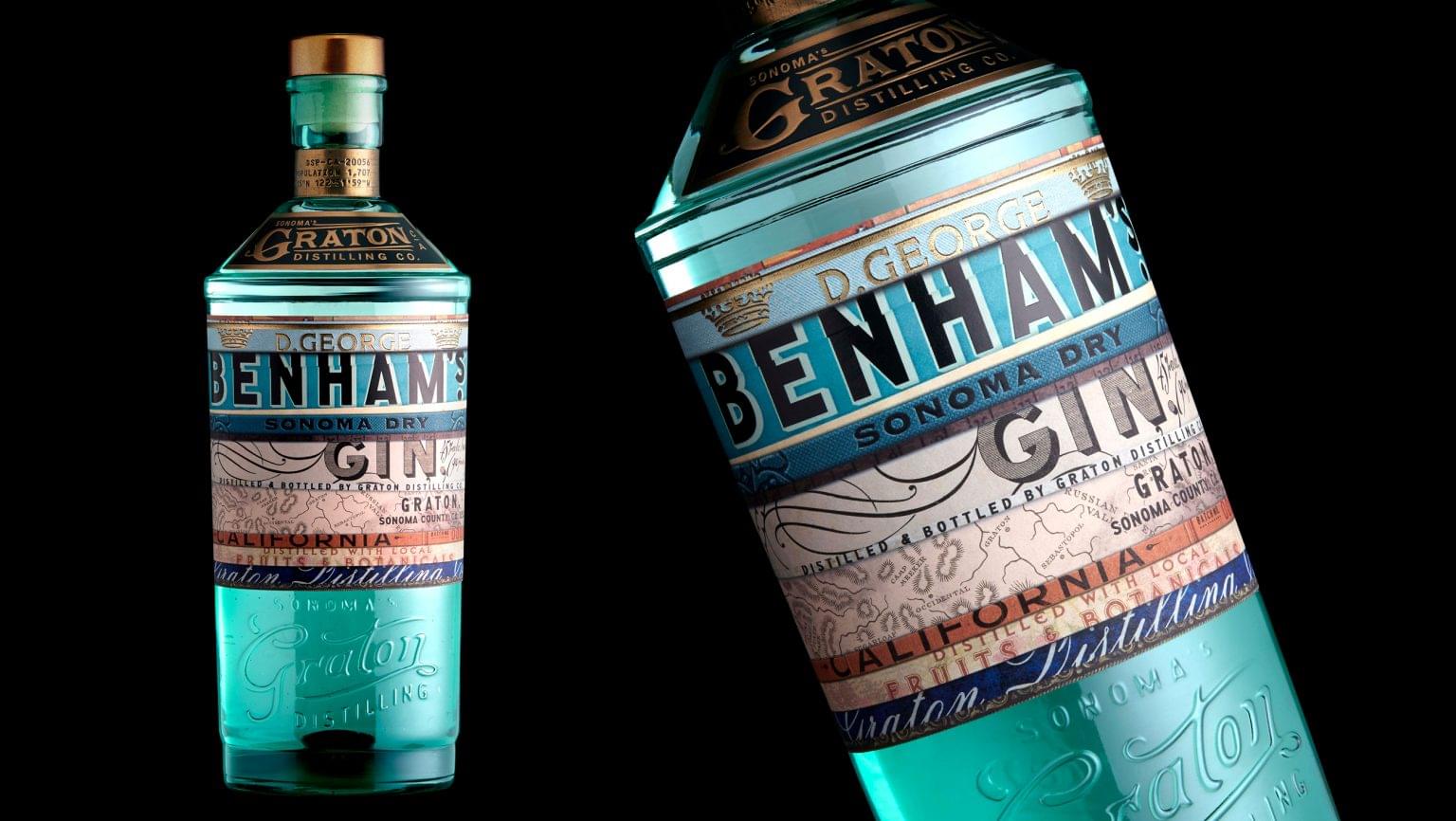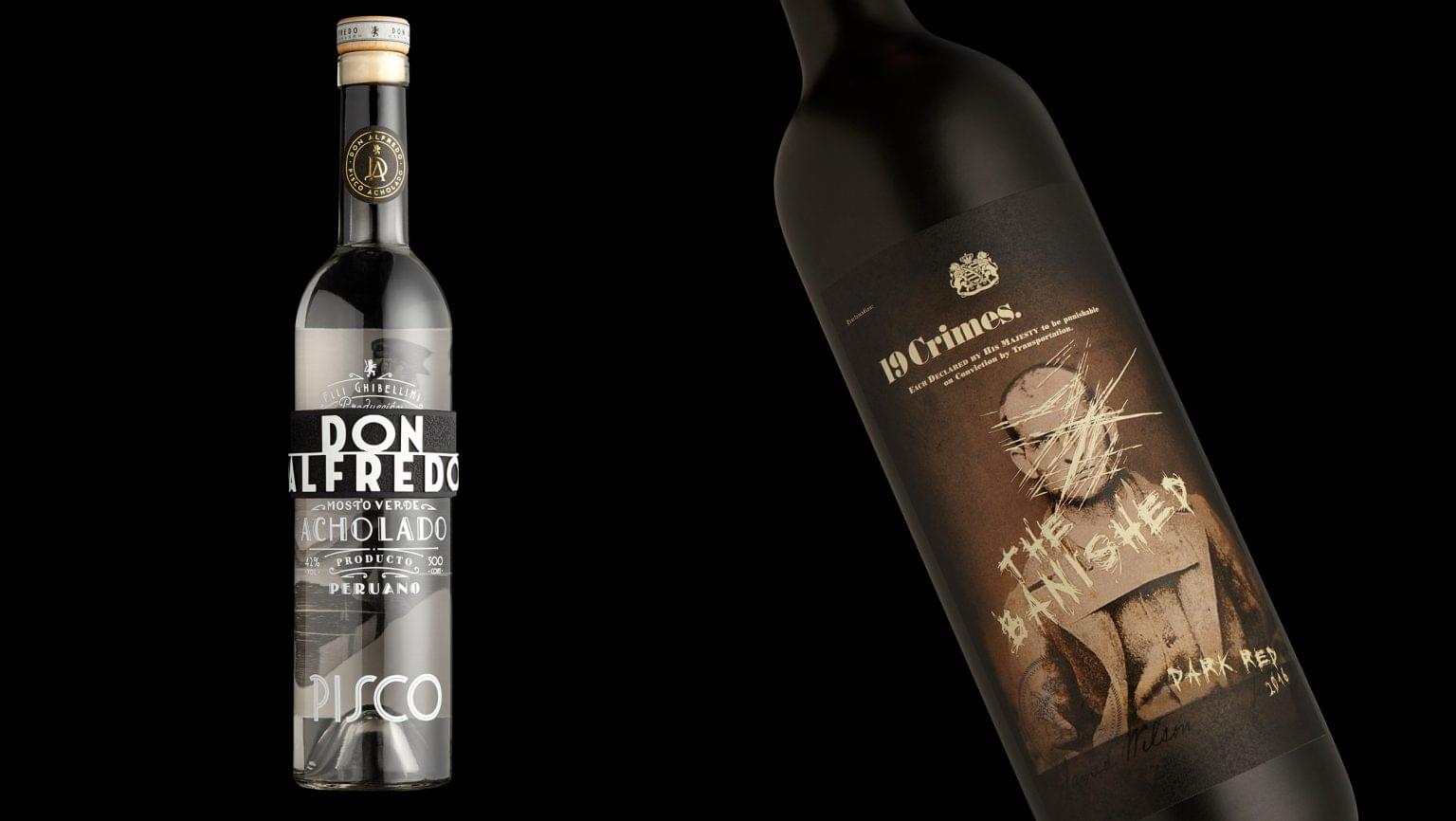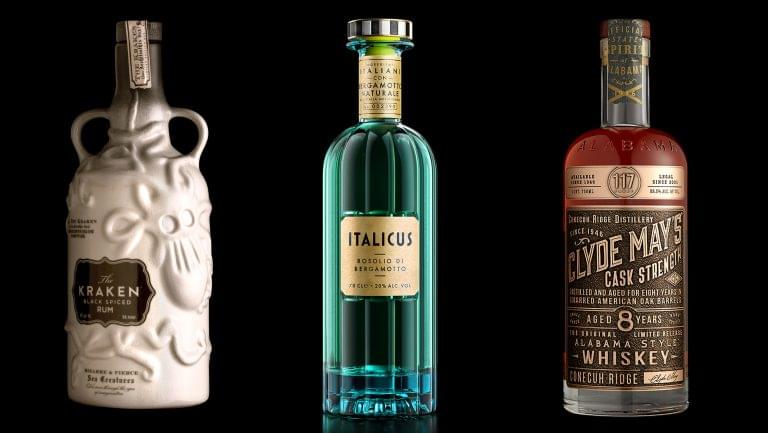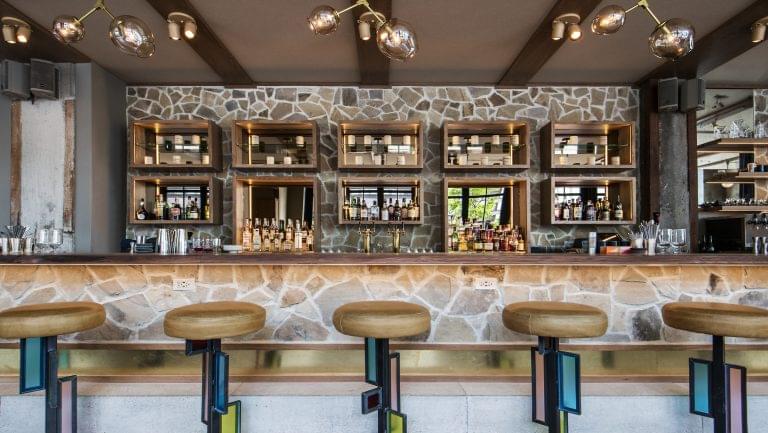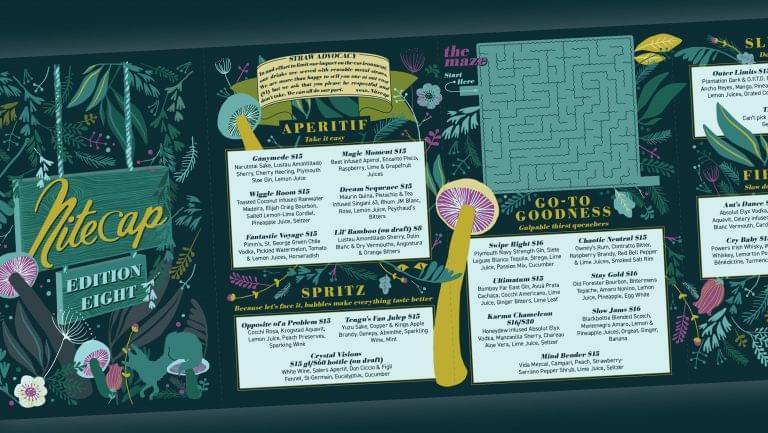Standing out prominently on the shelf is one of the biggest challenges facing wine and spirits brands. As many long-established brands have discovered, a fresh bottle design and label graphic can significantly boost sales. In recent years, the design firm Stranger & Stranger has developed a reputation for crafting some of the smartest, most visually arresting packaging for new and established wine and spirits brands alike.
With studios in London, New York, and San Francisco and around 5,000 projects under its belt since its debut in 1994, Stranger & Stranger is attuned to the nuances of the beverage alcohol industry. Its founder, Kevin Shaw, who is an avid wine collector, had just quit his job as a designer at an advertising agency in London, where he worked on the Royal Caribbean Cruises account, when he attended a wine auction with a friend. There, his pal commented on how terrible some of the labels were, and Shaw, eager for a new, more meaningful career, realized he could put his imaginative proclivities to a different use.
“I spent some money on hard-core FMCG [fast-moving consumer goods] customer insight [research], went to the nearest wine distributor, and offered rebrands in exchange for wine.” That distributor was London-based Bibendum, then a small, independent firm and now “a monster, the biggest in the U.K.,” Shaw points out. “We just took all the crusty French labels and made them approachable to regular consumers. A truckload of wine turned up at my house, which was amazing. But more importantly, the rebrands averaged 300 percent growth, so I knew I was onto something.” Buoyed by the Bibendum collaboration, Shaw started offering a money-back guarantee to other distributors, “the only time I’ve ever heard of a design company putting it all on the line, and the phone rang off the hook.” Business continued to soar for Stranger & Stranger on completion of the world’s first curve-hugging lenticular wine label for Bodega Norton in Argentina, which helped propel sales of 2 million cases.

Don’t miss the latest drinks industry news and insights. Sign up for our award-winning newsletters and get insider intel, resources, and trends delivered to your inbox every week.
Today, Stranger & Stranger’s client portfolio is vast, comprising such historic brands as Jack Daniel’s, Sandeman, Robert Mondavi, and Dewar’s, as well as newer brands like Kraken, Compass Box, Reyka, and Italicus. Scores of projects are divided among some 15 staff designers. “I think attention to detail goes through all of our work,” says Shaw. “Sometimes we set ourselves crazy tasks, but we try to give everyone their own look.” Often, the company’s design schemes yield ornate typography, textured glass, and whimsical, retro-inspired illustrations—elements that catch the eye and make a memorable first impression on customers, persuading them that the bottle has deeper stories worth delving into.
Each label Stranger & Stranger makes is a distillation of a brand’s distinct narrative. “You dig,” Shaw says. “You keep asking questions and probing until you find something ownable, hopefully unique, something enticing and interesting.” He points to the reboot of Aberfeldy Scotch as an example. Originally, the label featured a squirrel, an image that confounded Shaw. On learning that the springwater Aberfeldy uses at the distillery contains gold dust, Shaw immediately knew this would become the focus for the new design—a gilt-hued label. “A golden dram,” he says. “That’s something unusual, something that’s rooted in truth, something you can build a brand on. Consumers love stories like that. A year’s worth of stock sold out in 12 weeks.”
Tom Geniesse, the owner of New York City’s Bottlerocket Wine & Spirit, says that alluring designs are more likely to resonate with his clients. “As buyers,” he says, “we are driven by quality first, second, and third, but we definitely favor fun and catchy design, and our customers expect to see innovative packaging at Bottlerocket. Bottle design and label graphics are the scaled-down version of a highway billboard, and instead of every few miles, these messages compete within inches, elbow to elbow.” Stranger & Stranger’s work is notable for its eye-catching, quirky designs, which stand out on crowded shelves, says Geniesse, who adds, “In the end, we are human. We are drawn to the shiny thing, and we’re positively inclined by anything that makes us smile.”
Shaw deems liquor launches “blue-sky creative opportunities because new products need to shout a lot louder,” but often he and his team are tasked with the revamp of an existing brand, a more grueling effort that comes with a lot of baggage. “One client described the process as akin to ordering plastic surgery for his children, and I understand the angst,” he says. Along with navigating the changes dictated by an evolving marketplace, Shaw adds, there are practical matters to consider, like costs of goods.
Maison Ferrand’s Citadelle Gin, which traces its roots to the 18th century, is one brand that Stranger & Stranger provided a new identity. Its redesign garnered a gold medal at The Spirits Business’s Design & Packaging Masters Awards in 2017. The upgraded bottle, not yet available in the States, arrived in France last September, and Angélique Jullienne, Ferrand’s marketing manager for Europe and Asia Pacific, is pleased with the result, which marries striking ribbed glass with notations about the gin’s characteristics. “The overall idea was not only to redesign our bottle,” she says, “but to redefine our brand territory in order to make our messages clear and understandable. Stranger & Stranger did a remarkable job conveying this. Thanks to them, it is easy for consumers to understand that Citadelle Gin is the first artisanal gin of France.”
There is no new-business division at Stranger & Stranger, so the company is “largely at the mercy of who calls,” Shaw says, “but we’re noticing a more diverse type of client [who’s] willing to take a chance with our approach. We’re already taking on fine foods, delis, cosmetics—anywhere we can premium-ize and make a difference—and we even got a call from the United Nations to do postage stamps for 193 nations on International Peace Day.”
When asked to single out his most significant triumph, Shaw says he would look at brands Stranger & Stranger has created from scratch. “The Kraken [rum] is worth over a billion dollars,” he points out. “But to be honest, the biggest thing I will ever do professionally is to create a firm like Stranger & Stranger. Strangely, it turned out almost exactly how I’d hoped, but I don’t think I appreciated back then what an incredibly talented and committed group of people I’d get to work with every day.”

Dispatch
Sign up for our award-winning newsletter
Don’t miss the latest drinks industry news and insights—delivered to your inbox every week.
Alia Akkam is a writer who covers food, drink, travel, and design. She is the author of Behind the Bar: 50 Cocktails from the World’s Most Iconic Hotels (Hardie Grant) and her work has appeared in Architecturaldigest.com, Dwell.com, Penta, Vogue.com, BBC, Playboy, and Taste, among others, and she is a former editor at Edible Queens, Hospitality Design, and Beverage Media. A native New Yorker, Alia now calls Budapest home. Follow Alia @behdria.

